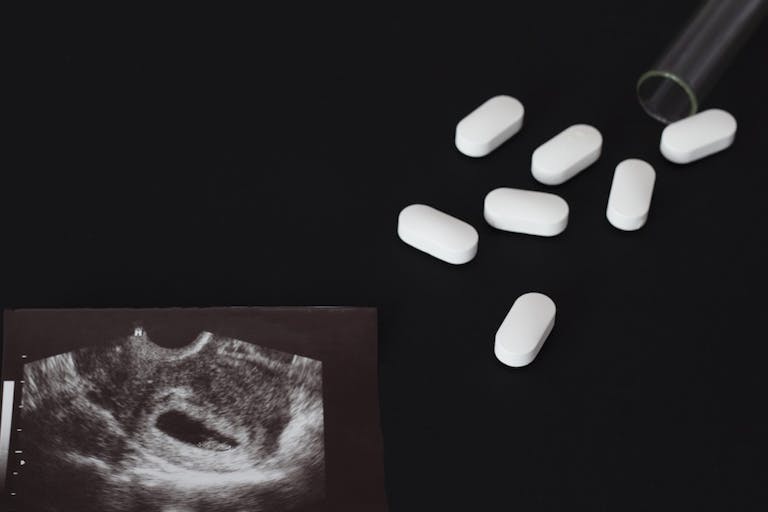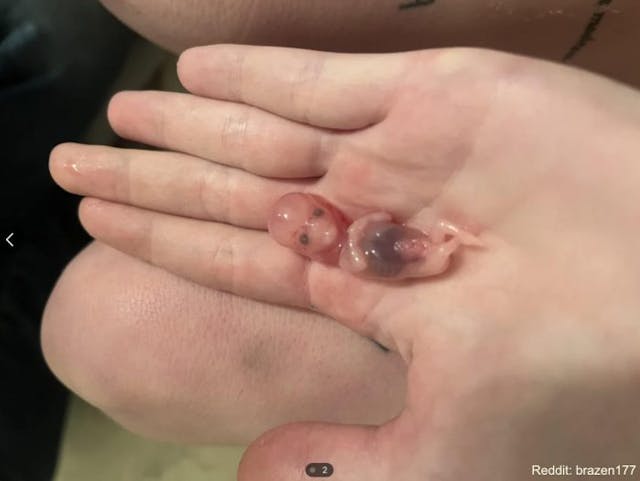
FDA Commissioner accused of intentionally delaying abortion pill safety review
Carole Novielli
·
Abortion Pill·By Nancy Flanders
Some want the US to be like Sweden, aborting babies by pill though old enough to survive
In Sweden, it’s become normal to abort viable babies in the second trimester — even up to an age that babies have survived when born prematurely — using the abortion pill regimen (also known as chemical abortions). Is this where the United States is headed? Abortion advocates think it should be.
In the United States (U.S.), chemical abortion is approved to 10 weeks of pregnancy, while in Sweden, it’s approved to 22 weeks.
Abortion proponents want the U.S. to bring laws surrounding chemical abortions to be more in line with Sweden’s laws, making it more dangerous for women.
Expanded use of chemical abortions could lead not just to greater complications for women, but to relaxed infanticide laws, and more bodies in the streets.
The Nation recently published an article shaming the U.S. over its gestational age restriction for the abortion pill regimen.
The article included the story of Lena (not her real name) as she contemplated whether to abort her baby. While her husband was “desperate for more children,” and she thought her son might like a sibling, she didn’t want to put in the effort to raise another child. But she wouldn’t be “rushed into that decision,” wrote Cecilia Nowel — because in Sweden, she could take the abortion pill well into the second trimester.
In Sweden, chemical abortions are approved through 22 weeks, unlike in the U.S., where they are only FDA-approved through 10 weeks (70 days), lamented Nowel. As a result, in Sweden, 97% of abortions are committed by the abortion pill regimen, compared to 63% in the U.S.
“Sweden’s use of abortion pills has important lessons for the United States,” claimed Nowel.
Nowel thinks American abortionists should take a hint from Swedish abortionists, expanding the abortion pill regimen later into pregnancy — even “under an administration hostile” to killing preborn children, and even when the FDA has only approved it through 10 weeks. The later the gestational age, the riskier the abortion becomes for the woman. Risks include incomplete abortion (with follow-up surgical abortion), retained fetal tissue, infection, and death.
There are abortionists willing to turn a blind eye to the risks and the law in the U.S., including Dr. Gabrielle Goodrick, an Arizona abortionist who gives women the abortion pill beyond 10 weeks. The no-test abortion pill protocol allows abortionists to mail the drugs to women across the country without a medical exam, any knowledge of the woman’s health status, or the baby’s gestational age.
Those women are then left on their own to deal with complications that may send them to the emergency room, or even to deal with how to dispose of the body of an aborted child who is too large to flush down the toilet. The abortion industry, via the abortion pill, didn’t just offload the abortions themselves to women; they also offloaded the problem of disposing of the remains of those aborted children.
The true depth of the dangers of chemical abortions are unknown, because when women do present to hospitals with adverse effects of the drugs, they have been urged by abortionists to lie and claim they are miscarrying (despite no risk of the woman’s arrest or prosecution), heavily skewing the adverse events data, which never makes its way to the drug’s manufacturer or to the FDA, which sets the safety rules surrounding the drug.
Some women are even led to believe that they’re truly having a miscarriage — with some abortion businesses even describing an abortion as “bringing down your missed period.”
Article continues below
Dear Reader,
Have you ever wanted to share the miracle of human development with little ones? Live Action is proud to present the "Baby Olivia" board book, which presents the content of Live Action's "Baby Olivia" fetal development video in a fun, new format. It's perfect for helping little minds understand the complex and beautiful process of human development in the womb.
Receive our brand new Baby Olivia board book when you give a one-time gift of $30 or more (or begin a new monthly gift of $15 or more).
Sandra Walis, a midwife who commits abortions via pill at Östra hospital, even claims, “We’re creating miscarriages with medicine.” It’s jarring to see intentional killing redefined as “medicine.”

So what do second trimester chemical abortions look like in Sweden? At Östra, women are given mifepristone (to deprive the baby of oxygen and nutrients) followed by misoprostol (to cause contractions) one or two days later. They return to the hospital that day to give birth to an expected stillborn (yet potentially alive) baby, and a pan is placed in the hospital room toilet to catch the baby’s body and placenta.
It’s disturbing — and apparently, widely accepted.
Nathalie Kapp, chief medical adviser for the International Planned Parenthood Foundation, agrees that chemical abortions should be expanded, but also thinks that surgical abortion should never be denied to a woman who wants one — even if it means women have zero medical care attached. But her reasoning is an example of the problems with chemical abortions.
“I feel it’s really important that we have both options,” she said. “Medication abortion is incredibly important. It’s really allowing a lot of things to happen as far as women being able to have abortions without doctors and without midwives and without providers in all kinds of settings. I think it’s been transformative. But I do think it’s not an experience that everybody wants to have” (emphasis added).
No kidding. Just ask one of the countless women who have shared their trauma stories with Live Action’s “I Saw My Baby” campaign. These women didn’t see a “clump of cells” when they took the abortion pill; they saw and held their dead babies of varying ages and sizes — some still with beating hearts. They didn’t just pass a bunch of tissue and go on with their days; they experienced severe cramping, hemorrhaging, even weeks worth of bleeding. Their babies are flushed away down toilets as they try to come to grips with what they’ve done.

But some women birth deceased babies too large to flush down toilets. Bodies have been found inside plumbing pipes, in dumpsters, in garbage cans, in car trunks, and on sidewalks.
Abortionists have been working to expand the abortion pill for years, and their ultimate goal is over-the-counter abortions by pill; it cuts down on their overhead and frees them of the responsibility of carrying for patients with botched abortions.
Follow Live Action News on Facebook and Instagram for more pro-life news.
Live Action News is pro-life news and commentary from a pro-life perspective.
Contact editor@liveaction.org for questions, corrections, or if you are seeking permission to reprint any Live Action News content.
Guest Articles: To submit a guest article to Live Action News, email editor@liveaction.org with an attached Word document of 800-1000 words. Please also attach any photos relevant to your submission if applicable. If your submission is accepted for publication, you will be notified within three weeks. Guest articles are not compensated (see our Open License Agreement). Thank you for your interest in Live Action News!

Carole Novielli
·
Abortion Pill
Carole Novielli
·
Abortion Pill
Bridget Sielicki
·
Abortion Pill
Bridget Sielicki
·
Abortion Pill
Nancy Flanders
·
Abortion Pill
Carole Novielli
·
Human Interest
Nancy Flanders
·
Human Interest
Nancy Flanders
·
Activism
Nancy Flanders
·
Opinion
Nancy Flanders
·
Investigative
Nancy Flanders
·